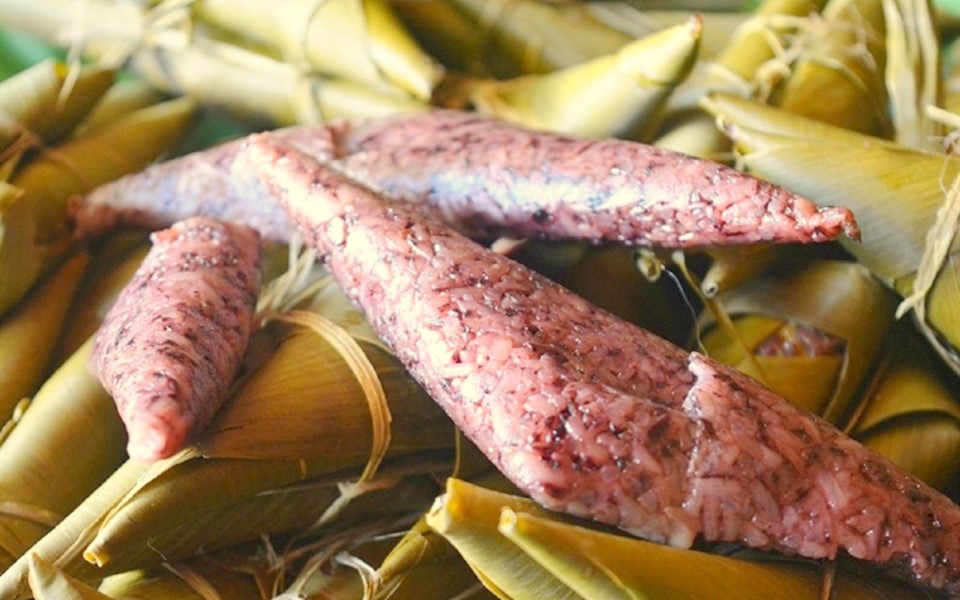Visitors to A Luoi Commune in the central city of Hue can experience the cultural heritage of the Ta Oi ethnic community through its signature dish, a quat cake, often called the “love cake.”
A quat is a small, horn-shaped cake made from black sticky rice and wrapped in dot leaves – scientifically known as Thysanolaena latifolia. Black sticky rice, considered the most prized rice of the Ta Oi people, gives the cake its distinctive color and fragrance. According to local tradition, each grain must remain whole during the pounding process, symbolizing wholeness and faithfulness in love.
Unlike Vietnam’s banh chung or banh tet, a quat contains no filling, relying solely on the quality of the rice and leaves for its flavor. Once boiled, the cakes reveal a dark hue tinged with pink when unwrapped. Their soft, sticky texture and mild aroma make them a cherished delicacy.
Beyond its culinary appeal, a quat holds symbolic meaning in the Ta Oi community. It is served to honored guests during festivals, ancestral ceremonies, and weddings. At weddings, pairs of quat cakes are presented as part of the bride’s dowry. One larger cake represents the groom, and a smaller cake represents the bride, reflecting harmony and loyalty in marriage. Mothers also bring the cakes when visiting their married daughters, reinforcing family bonds.
Tourists visiting A Luoi can witness the making of a quat while enjoying other cultural activities, offering an opportunity to experience the customs and daily life of the Ta Oi, one of the ethnic groups living in Vietnam’s central highlands.
By preserving dishes like a quat, the Ta Oi community not only maintains its culinary traditions but also strengthens cultural identity in a region rich with ethnic diversity.









